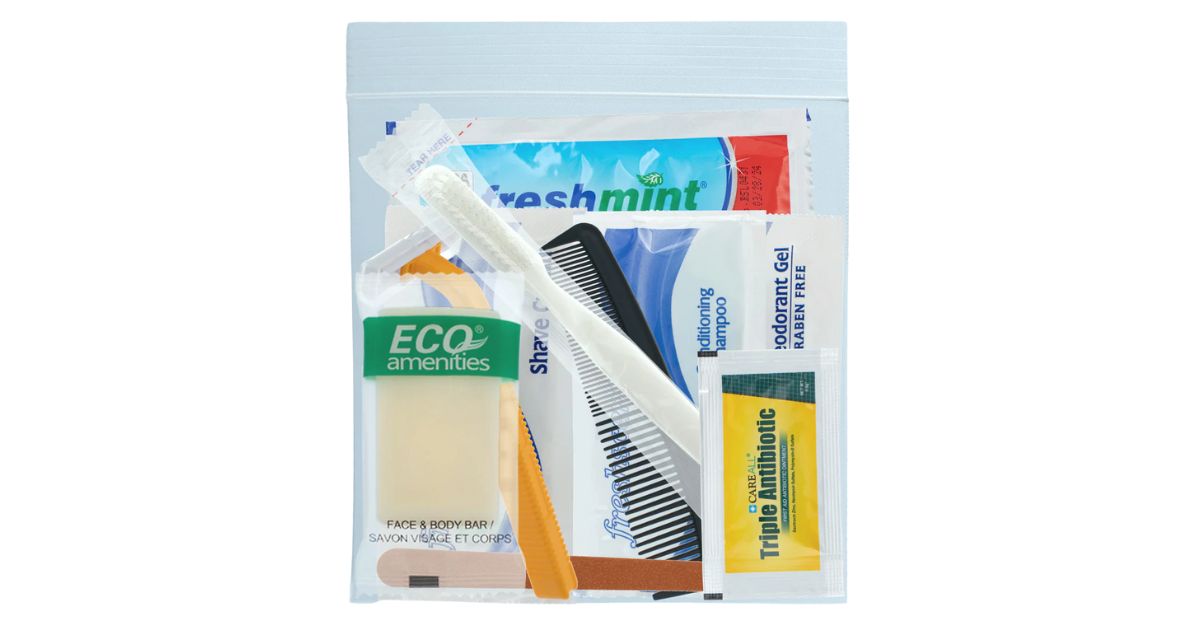Homelessness touches every community across America, affecting hundreds of thousands of people on any given night. While shelter and food often receive the spotlight in discussions about addressing homelessness, a critical yet overlooked need persists: access to basic hygiene supplies. Organizations nationwide know that understanding the impact of hygiene kits in donation efforts reveals profound connections between dignity, health, and pathways out of homelessness.
Why Personal Care Items Matter
Access to hygiene products is a fundamental necessity for health and well-being. Let's look at the ways the lack of these products affects individuals.
Health
For people without stable housing or a steady income, maintaining personal cleanliness can be a significant challenge. Public restrooms may be inaccessible or unsafe, and the cost of toiletries can be prohibitive when every dollar counts toward food or shelter.
Unfortunately, poor hygiene can have compounding negative health effects. For example, substandard dental hygiene can lead to painful infections and chronic health problems, while skin conditions can worsen without regular washing.
Opening Doors to Opportunity
A clean and well-groomed appearance is often a prerequisite for social and economic opportunities. Employers are more likely to hire someone who presents themselves professionally. Landlords may be more willing to rent to an individual who appears to take care of themselves. Even accessing services at government agencies or nonprofit organizations can be a more positive experience when a person feels confident in their appearance.
By providing the means for personal grooming, hygiene kits remove a significant barrier to progress. They equip individuals with the confidence to pursue employment, housing, and other opportunities that can lead to long-term stability and security.
The Essential Components of a Hygiene Kit
Creating an effective hygiene kit involves more than just gathering random toiletries. A well-thought-out kit contains practical, travel-sized items that are easy to carry and use. When planning a donation drive, focus on core items that address the most critical hygiene needs.
Basic Hygiene Items
Every kit should start with the fundamentals. These are the non-negotiable items that form the foundation of personal care.
- Soap: Bar soap is often more durable and longer-lasting than liquid soap. Choose a mild, unscented variety to avoid skin irritation.
- Toothbrush and Toothpaste: Dental health is crucial. Include a toothbrush with a protective cap and a travel-sized tube of toothpaste.
- Shampoo: A travel-sized bottle of shampoo is perfect. Consider 2-in-1 shampoo and conditioner products to save space.
- Deodorant: A travel-sized deodorant is a must-have for personal confidence and comfort.
- Comb or Brush: A small, sturdy comb helps individuals maintain a tidy appearance.
Gender-Specific Items
While a basic unisex kit is always valuable, you can increase the impact of your donation by creating gender-specific kits.
- For Women: Include menstrual hygiene products, such as tampons and sanitary pads. These items are among the most requested yet least donated at shelters.
- For Men: A disposable razor and travel-sized shaving cream can be very useful.
- General Additions: Consider including items such as lip balm, lotion, wet wipes, and a small pack of tissues. These extras add a layer of comfort and care.
When assembling kits, find a wholesaler and purchase bulk hygiene kits for homeless individuals. This approach is cost-effective and ensures that the products are new, unused, and uniformly sized for easy distribution. At 2Moda, we offer pre-packaged kits that contain all the essential items, saving your organization time and resources while guaranteeing a high-quality donation for recipients.
Challenges and Considerations in Donation Efforts
While hygiene kits are invaluable, organizers must approach distribution with care and foresight. Simply assembling and handing out items isn't enough to guarantee donations reach the right people. Here are a few things to consider.
Accessibility
Many individuals in need do not stay in shelters or attend organized distribution events. Outreach teams must meet people where they are, such as encampments or transitional housing facilities. This requires coordination, time, and often additional volunteers.
Sustainability
One-time donations provide short-term relief, but ongoing support creates lasting impact. Many shelters and outreach programs struggle with inconsistent supplies, leading to gaps in services. Donors can help address this by committing to regular contributions or partnering with suppliers who can provide steady shipments of hygiene kits throughout the year.
Quality Control
Not all donated items meet safety or usability standards, and low-quality products can reduce the effectiveness of hygiene kits. Organizations must ensure that every item is safe, appropriate, and reliable. Careful sourcing protects both the dignity and health of recipients.
Logistics and Storage
Managing inventory is another challenge. Large donations often require secure storage space and efficient systems for distribution. Without strong logistics, even the most generous contributions risk going unused or expiring before they reach recipients.
Recipient Dignity and Choice
While pre-assembled kits are convenient, they sometimes leave out items that individuals personally value. Offering a degree of choice, whether through customizable kits or supplemental items, helps preserve dignity and ensures that recipients feel truly supported.
Measuring Success and Impact
Donors and organizations strengthen their efforts when they track results. Measuring the outcomes of hygiene kit programs ensures that resources go where they matter most and helps inspire continued support.
- Distribution Numbers: Track how many kits you hand out and where they go.
- Health Outcomes: Partner with shelters or clinics to see if access to hygiene supplies reduces illness.
- Personal Feedback: Collect stories from recipients to understand how kits affect daily life.
- Community Response: Monitor participation in donation drives or volunteer events to gauge engagement.
- Long-Term Results: Look for improvements such as higher school attendance or increased job readiness.
By collecting both data and personal stories, organizations demonstrate the real value of their work. Clear evidence of impact reassures donors that their contributions make a measurable difference. It also helps nonprofits adjust their strategies, ensuring hygiene kits remain effective tools for protecting health and restoring dignity.
If you're working on your own, focus on simple ways to track impact, such as keeping a log of distributions or gathering informal feedback from recipients.
Make Your Next Donation Count
Hygiene kits may appear small, but their influence is anything but. They safeguard health, restore dignity, and empower individuals to take steps toward stability. For organizations and donors alike, understanding the impact of hygiene kits in donation efforts unlocks new opportunities to serve communities more effectively.
As you plan your next donation drive, consider prioritizing hygiene. Even small items like toothbrushes can make a big difference.


